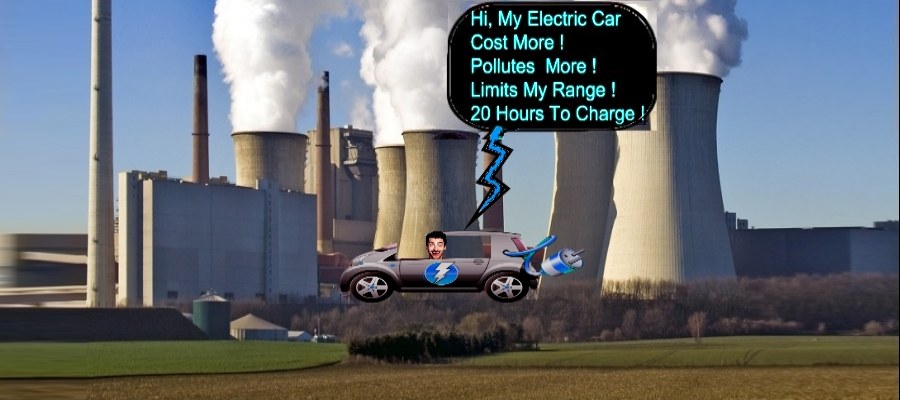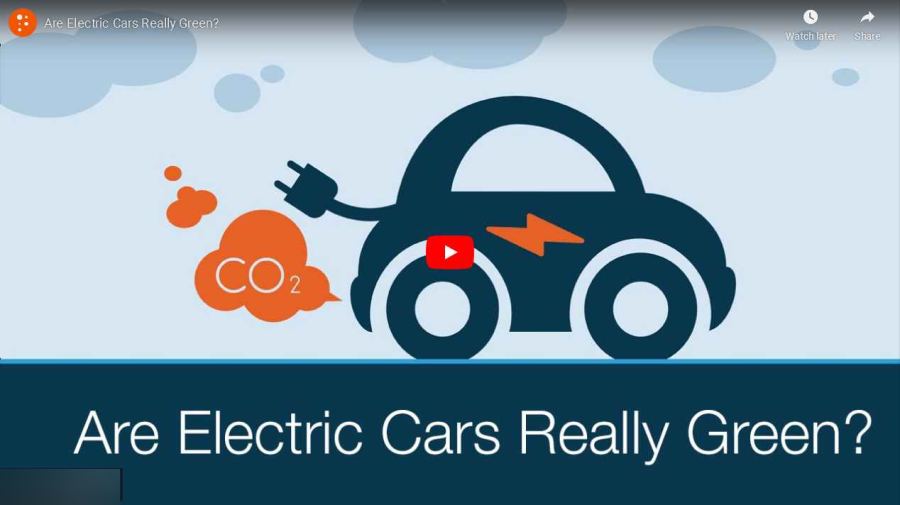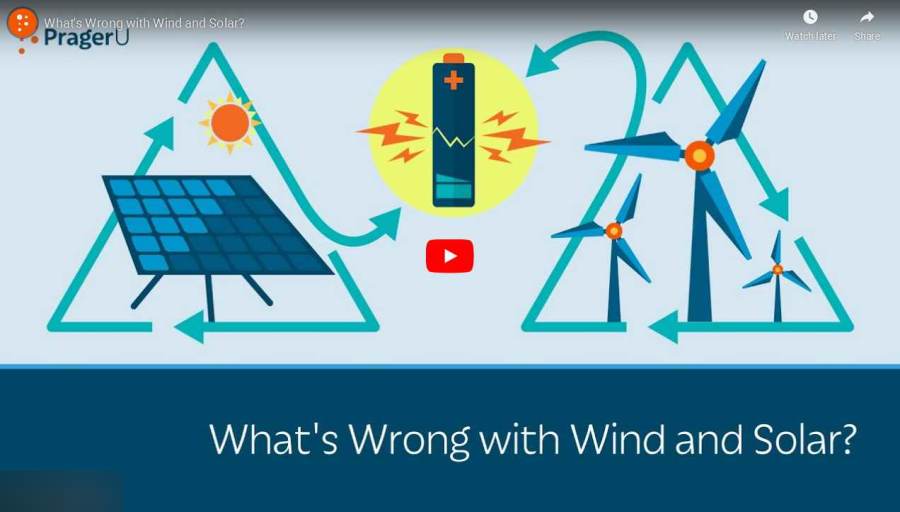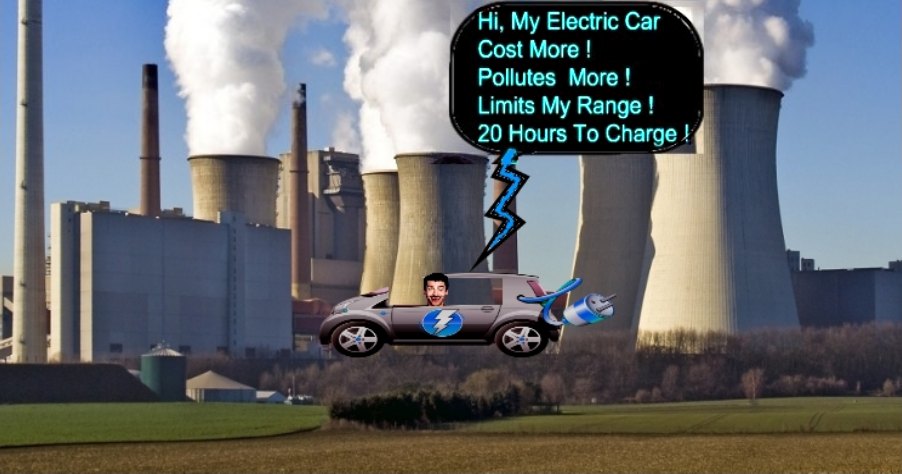\\\- [ AUTO_TECH ]-NEWS-///
Electric Car Crazies Live In A Self Created Bubble.
Electric Cars Will break The U.S. Power Grid. If All Chargers At One Station Are Being Used, The Power Being Used Is Equivalent To 1,080 Homes Every Hour.
https://yournews.com/2023/11/14/2688107/electric-car-charging-stations-power-usage-exceeds-that-of-280/
Each Individual Car Being Charged Is Using The Equivalent Power Of 280 Homes Every Hour
A recent observation made by a man charging his electric car has highlighted the significant amount of electricity consumed by electric vehicle (EV) charging stations. According to the individual’s explanation, a single charging station can use more electricity in an hour than what 280 average homes would consume.
—-
“This is a 350 kilowatt station. I’m consuming roughly 137 kilowatts. It’ll fluctuate. Sometimes I can go up to the full 350. But to put this into perspective, an average home consumes 1.25 kilowatts per hour. 135 kilowatts per hour. It’s like the equivalent of 106 homes on the grid, just this one station,” the man explained in a video uploaded to social media.
The Truth About Electric Cars. Each Individual Charging Station Is Using The Equivalent Power Of 280 Homes Every Hour ?
If All Chargers At One Station Are Being Used, The Power Being Used Is Equivalent Is 1,080 Homes Every Hour
“I think I’m just doing a quick little video here… pic.twitter.com/bfUZi6Lobh
When operating at full capacity, a 350-kilowatt charging station would use an amount of electricity equivalent to the energy usage of 280 homes. The scale of energy consumption becomes even more apparent when considering multiple charging stations. “Now, if I was gonna get the full 350 kilowatts like these can supply, that would be the equivalent of 280 homes. Now think about all six chargers running at full capacity. That’s like 1,080 homes on the grid,” he added.
—-
The man also raised concerns about the feasibility of the Democrats’ goal to transition entirely from gas vehicles to electric vehicles, given the substantial electrical demands of charging the EVs. “It’s things people don’t realize the amount of energy it takes to fast charge these batteries,” he said. “It’s a huge amount of electricity. And now you understand why the electric companies can’t even supply that much power to one spot. It’s like think of 1600 homes and how much copper and wire that would take to supply that many houses.”
—-
He concluded by questioning the sustainability of such a transition, considering the current electrical infrastructure. “They got to figure something out because to have every car in America on the grid, it’s going to be…I don’t even know what those numbers would be,” he stated, highlighting the potential challenges in achieving a nationwide shift to electric vehicles. [edited-oracledream.com-Lance Roman.]
—–
—–
https://carsofelectric.com/12-biggest-problems-with-electric-cars/
Electric Car Problems List Number 1
12 Main Problems That Electric Car Owners Face
1 Limited Range And Long Charging Times –
—-
One of the biggest problems with electric cars is range limit. Most models can only travel for around 100 miles on a single charge. It can be impractical for long-distance travel. Charging times are also a major issue. It can take several hours to full charge an electric car. It can be inconvenient if you need to drive somewhere in a short time.
2 High Initial Cost –
—-
Electric cars are more expensive than gasoline-powered cars. This is due to the high cost of batteries and other components. Many people can’t afford to buy an electric car. Especially if they don’t have a government or corporate subsidy.
3 Lack Of Charging Infrastructure
—-
Electric cars can only be driven if there is a charging station available. Unfortunately, there are still very few charging stations in the United States. It makes it difficult to charge an electric car when you’re on the go.
4 Difficulty Driving In Cold Weather Conditions
—-
Electric cars can be difficult to drive in cold weather conditions. The battery performance tends to decrease in low temperatures. It can make it hard to start the car. And if the battery is too cold, the car may not be able to generate enough power to run properly.
5 Limited Selection Of Models And Colors
—-
At the moment, there is a limited selection of electric cars on the market. This is largely due to the high cost of batteries and other components. Besides, most electric cars are only available in a few colors, which can be limiting for some buyers.
6 Lack Of After-Market Parts And Service
—-
Electric cars are still new. So there is a lack of after-market parts and services available. If something goes wrong with your electric car, it may be difficult to find a mechanic who can help you repair it.
7 Low Resale Value
—-
Electric cars tend to have a low resale value. This situation can be frustrating for buyers who are looking to sell their car later on. This is due to the high cost of batteries and other components.
8 Lack of Standardization
—-
At the moment, there is no standard for electric cars. This means that each model of an electric car is slightly different. It can make it difficult to find replacement parts or services.
9 Health Risks From Exposure To Electric And Magnetic Fields
—-
There is some concern that exposure to electric and magnetic fields from electric cars can be harmful to human health. This is still a relatively new area of research, so more data is needed to determine if there is a real risk.
10 Limited Battery Life-Cycle
—-
Electric car batteries have a limited life-cycle. It means that they will eventually need to be replaced. This is very costly and inconvenient for drivers.
11 Potential for Battery Fires
—-
There is a risk of battery fires with electric cars, especially if the battery is damaged or overheated. This can be a serious safety concern and cause extensive damage to the car.
12 Environmental Impact
—-
Electric cars are still not as environmentally friendly as many people assume. The production of electric car batteries is harmful to the environment. Plus, the disposal of electric car batteries is harmful. [edited-oracledream.com-Lance Roman.]
—–
—–
https://www.autoevolution.com/news/six-problems-with-electric-cars-that-nobody-talks-about-112221.html
Electric Car Problems List Number 2
= 1 = Manufacturing on multiple continents — complicated shipping requirements
—
Most conventional cars tend to be built with parts sourced close to the factories that make them. Many automakers opened facilities in other continents to cater to the needs of different markets at lower costs.
—
It was and still is cheaper to build cars on one continent and sell them exclusively in the respective markets than to use a single facility. The situation changes only for exclusive brands, which do not care that much about final costs, but also for automakers that have access to significant shipping deals.
—
When the first hybrid cars came to market, they were criticized for using Ni-Mh batteries. Those used metals sourced from mines found in isolated places in the world, and the rare substances had to be shipped across the world to be turned into batteries, and then they would be sent again to the factory that made hybrid cars.
—
Things have not changed dramatically for electric vehicles, except for the fact that automakers have begun making batteries in-house. However, that does not mean that the shipping chain does not lead back to a country that is far away from the factory, and that expensive metals have to be transported great distances to build batteries for electric cars.
= 2 = Lithium and other rare metals — where do they come from and at what cost ?
—-
As we wrote above, electric vehicles need precious metals for their batteries. At first, hybrids used Ni-Mh batteries, but competitive electric vehicles rely on the Li-Ion technology. The expensive part is called Lithium, and it is getting more expensive these days. However, where does it come from?
—-
According to a 2015 US Geological Survey, Australia is the world’s biggest supplier of lithium. It is followed by Chile, Argentina, China, and Zimbabwe in the top five.
—-
Just like oil, lithium is a finite resource, and it is becoming more expensive because of the demands made by automakers. Until something better comes along, lithium could become extremely costly. At the same time, electric cars will also have a bigger price because of the cost of lithium.
—-
The problem with electric vehicles is that lithium is not the only rare material used in their construction. Other “rare earth minerals” like “dysprosium,” “lanthanum,” “neodymium,” and “praseodymium” are used.
—-
For exemplification purposes, the electric motor needs neodymium and praseodymium, and “a touch of” dysprosium. The old batteries in Ni-Mh hybrid cars required lanthanum, but the new ones still need some of these precious rare earth minerals. They are mined in conditions that are not optimal, and their demand hurts the environment.
= 3 = Battery recycling — is everybody ready for it ?
—-
The first Prius is almost 20 years old. Its batteries have surely not been in service for that long, and they must have been replaced. If the advent of electric cars will follow the predictions announced by automakers, we will have a lot of Lithium Ion batteries to recycle in 2045.
—-
The year 2045 is not a typo, because it comes 20 years after the predicted boom of electric vehicles, which is expected to happen by 2025.
—-
While Lithium-Ion batteries can be recycled, and so can Ni-Mh ones, we do not have a massive market for those that recycle Lithium-based batteries. A few companies exist in the field, but there is nobody that stepped out and said: “hey, we will take care of those batteries, we are good for it.”
—-
While we find the fact that Lithium recycling facilities do not exist at the scale required when all of those electric cars will be parted out and meet the crusher, we do understand why. The world does not have a big market for electric cars yet, and the conventional ones do not get recycled properly in the first place. So do not throw that stone just yet.
—-
Toyota has a collection program for its old batteries, which involves giving a new life for the units that used to sit in Prius models. The cycle can still be improved to make these vehicles truly eco-friendly.
= 4 = Goodbye easy fixes and jump-starts
—-
Electric vehicles will not bring any easy fixes for their owners. Except for a flat tire or a burnt light bulb, your DIY days are over with electric cars. People do not work on modern cars because they have become too complicated nevertheless, but offering someone a jump-start will not happen with electric vehicles.
—-
While this means that those vehicles will have to be more reliable than conventional ones, one does wonder what will happen to an unlucky owner of an electric vehicle that is out of a warranty and has a significant powertrain malfunction. With a conventional car, things can be fixed in most workshops at reasonable rates, depending on how bad the damage was.
—-
No self-governing service unit knows how to fix electric motors of automotive grade, and most do not have the tools needed to work on those cars. So, instead of getting your car fixed at a workshop, they will politely send you off to the dealer. If the said dealer were to overcharge you, tough luck.
= 5 = No adventures into remote areas for you
—-
Remember the Land Rover Camel Trophy? The pictures and video footage of those adventures have brought a profound respect for that brand from many people, myself included. Those Land Rovers could handle everything that was thrown at them, and big jerry cans solved the problem of fuel.
—-
While some people have managed to drive electric vehicles from one point to another, embarking on thrilling adventures in some cases, none of the trips has targeted remote areas.
—-
We do not expect that to happen too soon, if ever, because it will take many years for electric cars to attain a “comfortable” range on a single charge. It would have to give someone the level of trust in the machine’s ability to cross difficult terrain, across vast distances, without becoming a very expensive forest decoration. Pun intended.
—-
In other words, electric cars will not bring the complete death of the conventional vehicle. Not in remote areas, and possibly not in places where the climate is unfriendly. The same applies to Hydrogen Fuel Cell Vehicles, which also require a complex fueling system and procedure.
= 6 = solar charging ?
—-
If you live in a house instead of an apartment building, you can get solar panels to power it, and an electric vehicle can be charged from them. However, solar panels are not cheap, and those needed to power a car are not on the lower side of the price scale.
—-
At this point, you probably think that hydrogen is the best way forward, right? Well, not exactly, because large scale manufacturing of hydrogen extracts the gas from methane, and it generates carbon dioxide and carbon monoxide.
—-
Both of these problems have theoretic fixes, but they need a significant volume of potential customers to be implemented, along with government subsidies from taxes. [edited-oracledream.com-Lance Roman.]
—–
—–
https://www.businessinsider.com/the-electric-car-why-it-is-not-ready-for-mass-consumption-2011-12
Electric Car Problems List number 3
1. Range
—-
This first issue in itself makes the electric car unusable for a majority of people. Tesla claims an almost 300 mile range for their two seat roadster. However, that mileage amount can only be reached under careful driving. That does not seem likely with the Tesla Roadster, as it is a two seat sportscar based on the Lotus Elise. The car encourages aggressive driving.
Also, the Tesla roadster is a $100,000 investment. The reach is very limited.
The Nissan Leaf, which is the top selling EV of 2011, has a claimed 100 mile range.
—-
On the flip slide, standard cars regularly get a range of 300-400 miles, and on certain occasions can get up into the 800 mile range.
—-
EVs are perfectly adequate to go around town or to run short errands. But the car is a harbinger of freedom; the idea behind it was to free people from the grid and get them exploring.
—-
Electric cars inherently limit a journey based on their small range, and thus destroy the spirit that created the car in the first place.
2. Charge Time
—-
But if you run out of juice, why not just recharge?
—-
In the case of the Leaf, once the battery is depleted it can take up to 20 hours to completely recharge on a 120 volt outlet, according to Nissan. On a 240 volt, it takes seven hours, and a 480 volt fast charge station takes 30 minutes. In our instant gratification broadband society, even waiting 30 minutes is an eternity.
—-
We timed a fuel stop in our personal car and it takes approximately four minutes. No contest.
3. Infrastructure
—-
Other than the range issue, what truly plagues electric cars right now is the lack of a charging infrastructure.
—-
We used Nissan’s ChargePortal website to find how many charge points were near our office. In a 10 mile range, there are just 11. New York City is ideal for electric cars, but 11 charging stations just are not enough to make it a convenient option for New Yorkers.
—-
We then checked for gas stations in the same area on fuelmeup.com. It showed us that there are 35 filling stations in the same 10 mile radius.
—-
The US Census has reported that there are approximately 125,000 filling stations across the United States. By the end of 2012, it is expected that there will be 13,000 electric car charge points.
—-
While the infrastructure is growing, there will still be 90% less charge points available than gas stations next year.
4. Cost
—-
The Chevrolet Volt and Cruze are approximately the same size.
—-
The Volt has a buy in of approximately $40,000. The Cruze starts at $18,000.
If you include the available $7,500 tax credit for buying the Volt, that cost comes down to $32,500. Is the Volt worth the $14,000 premium over the Cruze, a car which already gets phenomenal city (25 MPG) gas mileage?
—-
If we say that gas costs $4 per gallon, the Cruze would need to be filled up 225 times before that $14,000 gap is brought to $0. According to GM, the Cruze’s range per tank is estimated to be 390 miles, so that means the 225 fill ups would occur over the course of 88,000 miles.
—-
That is almost eight years of driving, and according to The New York Times, Americans keep their cars for an average of around nine years.
—-
If the Volt is kept for that long, it will only be saving you money for one year.
5. Pollution
—-
When using the electric car, it is true that pollution is minimal.
—-
However, there are two factors that come in to play that may not be considered by the buyer:
—-
What power is used to charge the car?
How are the batteries made and what happens when they are disposed?
—-
Unless you have your own solar generator, the likelihood is that the electric car is actually being charged by coal or gas power, which are the most prevalent power generating stations in the world. They are also the most heavily polluting. We are not saying that one or two electric cars will create an issue, but the addition of hundreds of thousands or millions will put a strain on these plants, increasing pollution on their end.
With other advanced alternative power sources still years off, this is a legitimate concern.
—-
Along with that, the nickel-hydride batteries that are in electric cars are created in a number of heavy polluting processes like nickel mining. The nickel-hydride batteries also contain possible carcinogens, according to How Stuff Works. To complete the battery construction process, they are shipped all over the world which adds additional pollutants.
—-
Disposal of the batteries are also an issue. With toxic materials within, the incorrect disposal by a junkyard or manufacturer could destroy the ecosystem of an area for generations. [edited-oracledream.com-Lance Roman.]




